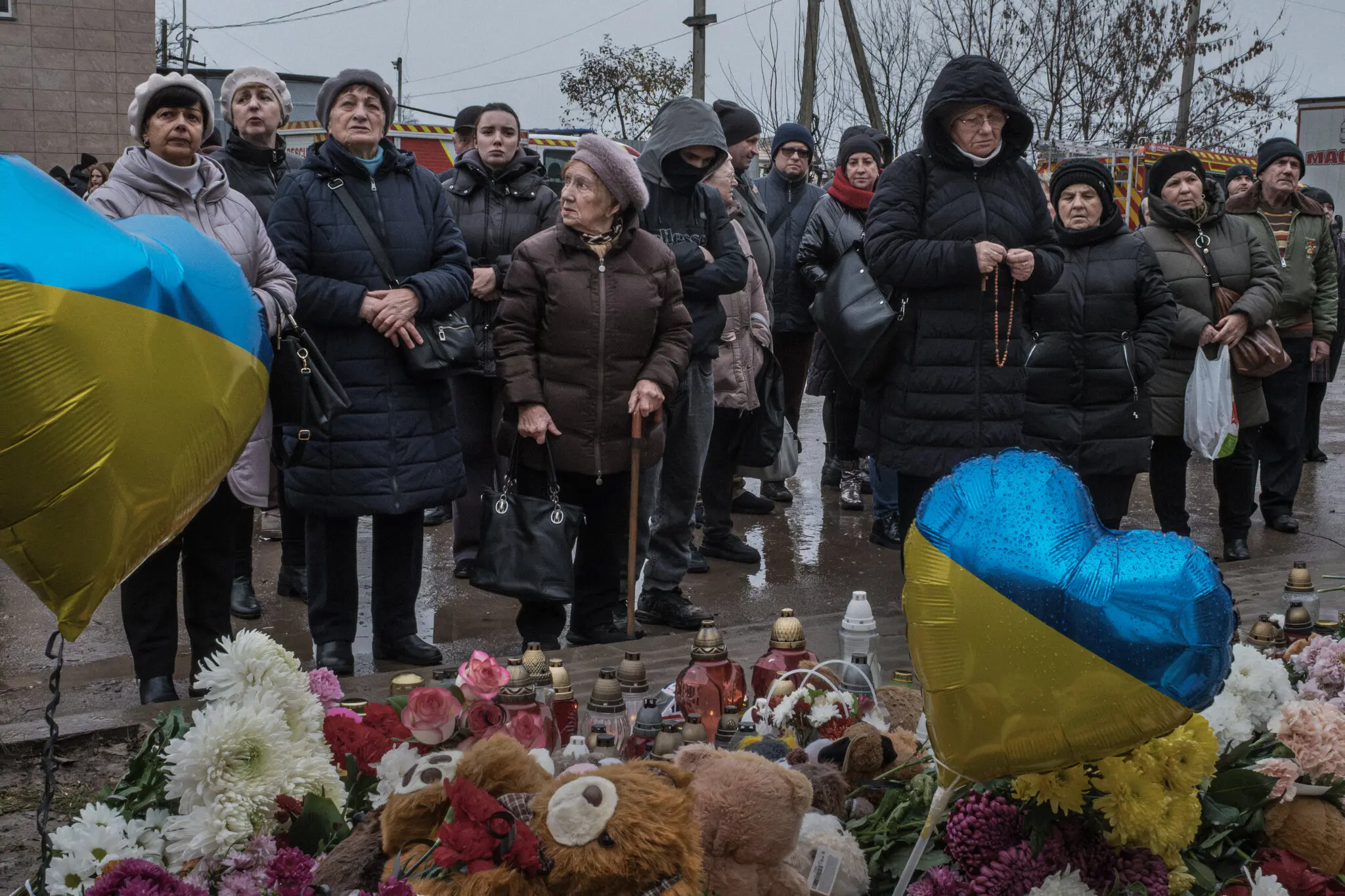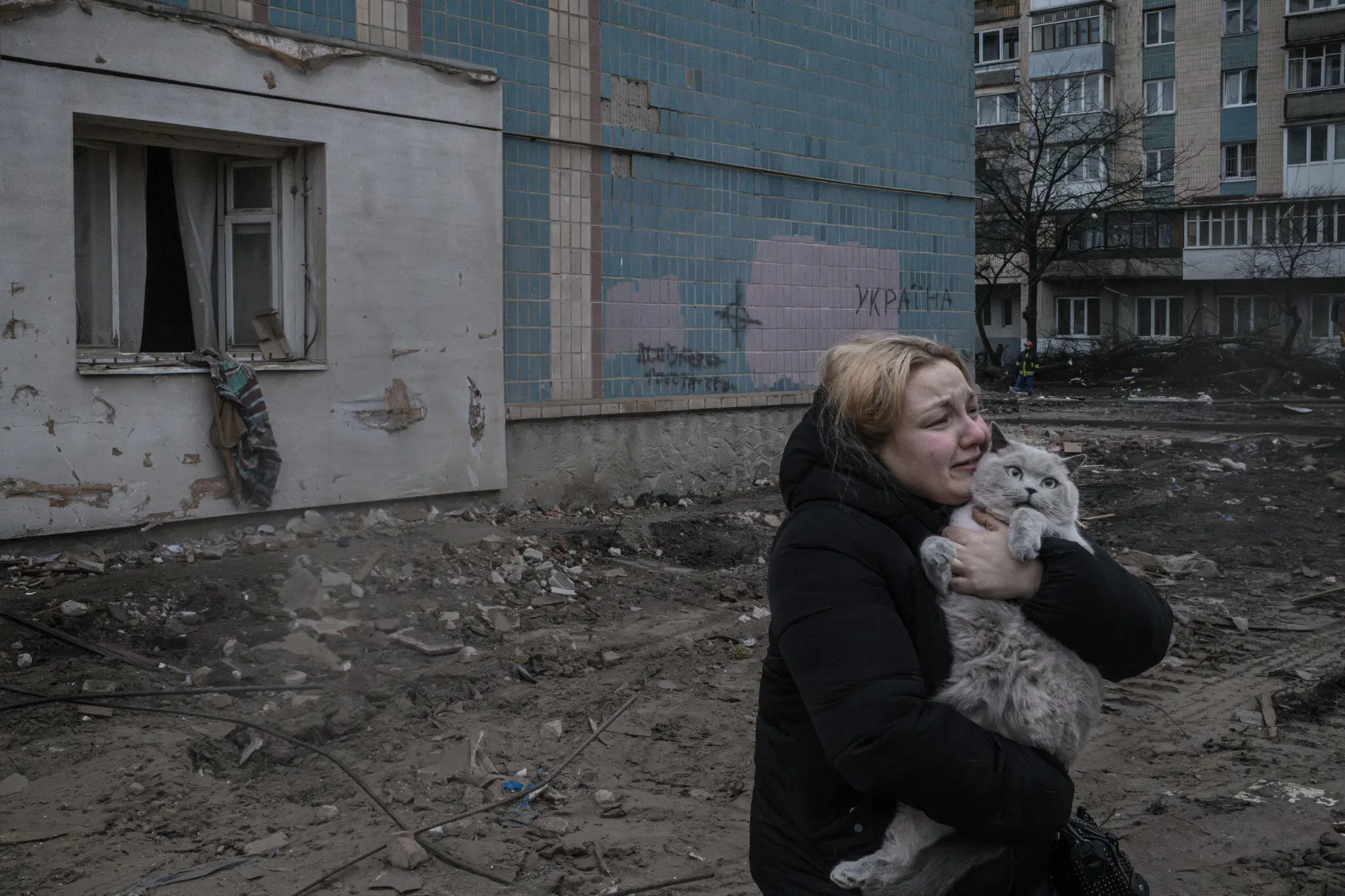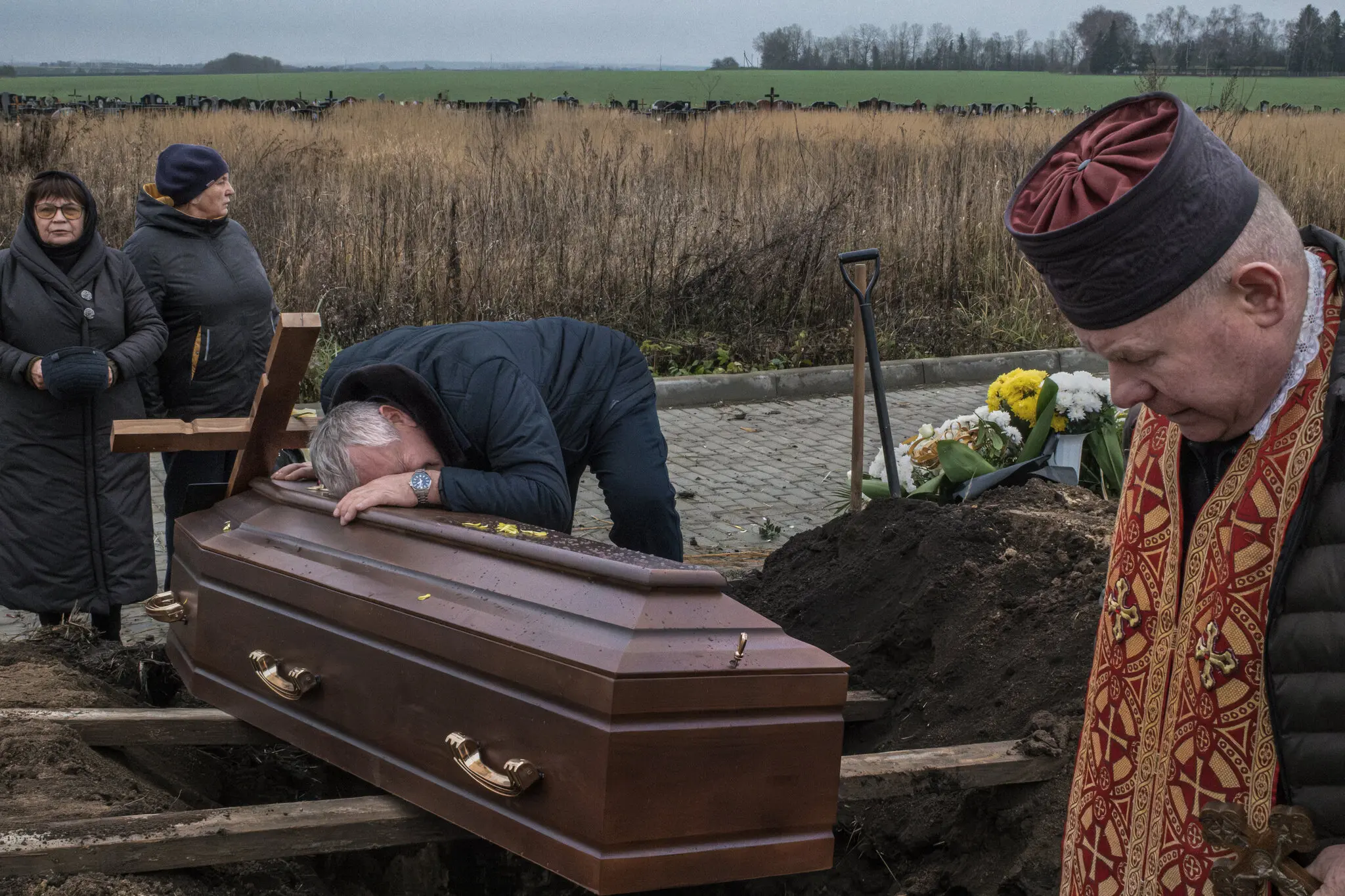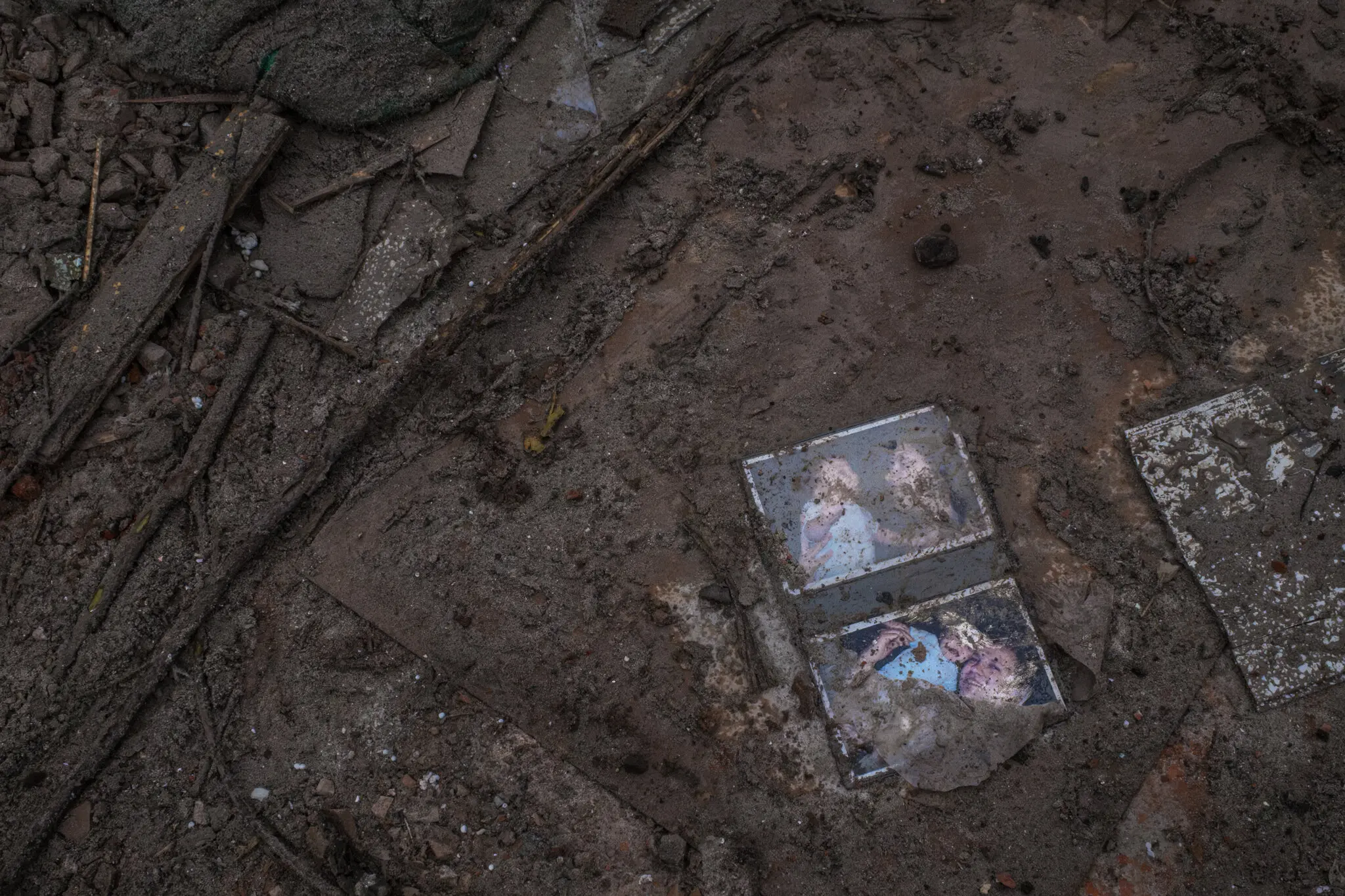Hope Dims for Survivors as Ukrainians Keep Vigil in Grief After Deadly Strike
22.11.2025
Russian Strike Shatters a Western Ukrainian City Far From the Front
Russian missiles slammed into residential blocks in Ternopil this week, striking a city of about 225,000 people that had largely been spared some of the worst attacks of the war. Two nine-story apartment buildings were ripped open. By Friday afternoon, officials said 31 people had been killed, among them six children, and 10 residents were still unaccounted for.
The attack, one of the deadliest on civilians in western Ukraine since Russia’s full-scale invasion in February 2022, underscored that no part of the country is truly safe. Moscow claimed it was targeting industrial and energy sites and framed the strike as retaliation for what it called Ukrainian “terrorist attacks” using American-made long-range missiles.
To people in Ternopil, the justification rang hollow. The same week, the United States unveiled a peace proposal that would give President Vladimir V. Putin key concessions — additional territory, limits on Ukraine’s military and no path to NATO. Many here saw the timing as a brutal contradiction.
“It’s disgusting,” said 37-year-old Ihor Cherepanskyi, who spent days standing in the snow before the ruins of one of the towers.

A Great-Grandson’s Search
When the missiles exploded just before 7 a.m. Wednesday, Mr. Cherepanskyi’s first thought was of his great-grandmother, Valentyna Shablysta, who lived on the sixth floor of one of the buildings.
Her home had always been his refuge. As a boy, he ran there for hugs and homemade dumplings with sour cream. At 25, after his mother died of cancer, he went back again, to the same small kitchen and the same woman who never missed a birthday and never appeared without her red manicure and carefully applied makeup.
So he rushed to her building. Flames and thick black smoke poured from the upper stories. He sprinted up the stairs, but everything above the fifth floor had collapsed.
He dialed her number. Somewhere high above, a phone rang and rang. No one picked up.
“Right then I understood the odds,” he said on Friday, staring up at the broken concrete where her apartment had been. “I knew how heavy the building was, how powerful the missile was — what that meant.”

Waiting in the Cold
Since Wednesday, Mr. Cherepanskyi has followed the same routine: arriving at the cordoned-off courtyard at dawn and staying until just before the nightly curfew at midnight. Twice he went to the morgue to look at bodies. Neither was her. One had gray hair – something his great-grandmother, who dyed hers a pale blond, would never have allowed.
He stood outside as temperatures fell to 5 degrees below freezing, wearing only a light jacket, thin hat and no gloves. From the street he watched crews clear the wreckage. At one point, he recognized her refrigerator, crushed and hanging from what used to be the fifth floor. Later he saw a crane hoist away the shattered staircase that had blocked him on the day of the strike.
About 180 emergency workers rotated through the site, cutting, lifting and digging in search of anyone still alive. Miraculously, they pulled out a young man who had been in his ninth-floor kitchen when the missile struck. A parrot in its cage and two cats were also found alive. The man was the only human survivor pulled from the ruins.

Families Identified by Pendants and Tattoos
For most families, the wait ended in grief. Military officials said a mother and her 8-year-old daughter were discovered locked in an embrace, recognized only by the pendant on the woman’s neck.
Friends at the scene said 18-year-old Taras Hnatiuk initially made it out of the building but kept going back inside to help others. His burned body was later identified by a tattoo on his right forearm that read, “I love my mom.” He and his mother had moved to Poland after the invasion; he was visiting his grandmother in Ternopil for just 10 days.
“We kept hoping he was somewhere on a lower floor, that he had escaped somehow,” said his 16-year-old friend Sofiia Larina, who left flowers at the site on Friday. “Then we saw the middle of the building, where his apartment was — and it simply wasn’t there anymore.”
Three more bodies — a woman and two children — were recovered from the rubble that morning. As the day went on, the growing crowd outside the building formed a spontaneous memorial of candles, lanterns, stuffed animals and red and purple flowers. Two heart-shaped balloons in blue and yellow, the colors of Ukraine’s flag, swayed in the cold air.

“Maybe the Wind, Maybe a Wave”
Among those waiting was 66-year-old Olha Hubitska, searching for her cousin, a woman she described as more like a sister. Her cousin, the cousin’s daughter and 4-year-old granddaughter Sofia all lived on the ninth floor and were still missing.
Ms. Hubitska moved back and forth between the disaster site and a local hospital, where 10-year-old Maksym — Sofia’s brother — was recovering.
She said the boy remembered a sudden blast and seeing his grandmother lying on the floor with her eyes closed. Later he told relatives, “I don’t know how I ended up on the seventh floor — maybe the wind, or a wave, I don’t know.”
By evening, floodlights illuminated the jagged cross-section of the apartment block so workers could keep going. Many of the 53 apartments in the building had been inherited from Soviet times, passed down through the same families for decades.

A Life in One Apartment
Ms. Shablysta received her sixth-floor unit in 1982, when the Soviet authorities assigned apartments to workers. Inside, she decorated the rooms with ornate green wallpaper patterned with gold. She had worked as a teacher and later as director of a nearby Children’s Creativity Center, helping run art and after-school programs.
She lived there with her husband until his death in 2018. In recent years, her closest companion was a white cat with gray spots named Murchyk — “the one who purrs,” her great-grandson explained — whom she walked on a leash around the playground.
On Friday night, as the season’s first snow began to fall, rescue crews kept digging. At 9:18 p.m., a crane lifted a red stretcher used to carry the dead up to the workers sifting through debris near the crushed refrigerator.
From below, Mr. Cherepanskyi watched them gently move a dead cat aside. Then they placed a black body bag on the stretcher. He stayed rooted to the spot, bracing for the confirmation he already felt.
Later, officials said another victim had been identified. She was No. 32. It was Valentyna Shablysta, the woman who had always waited for him with a hug and a plate of dumplings.










Leave a Comments